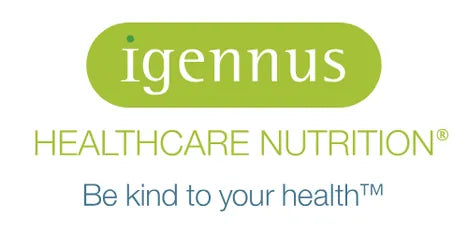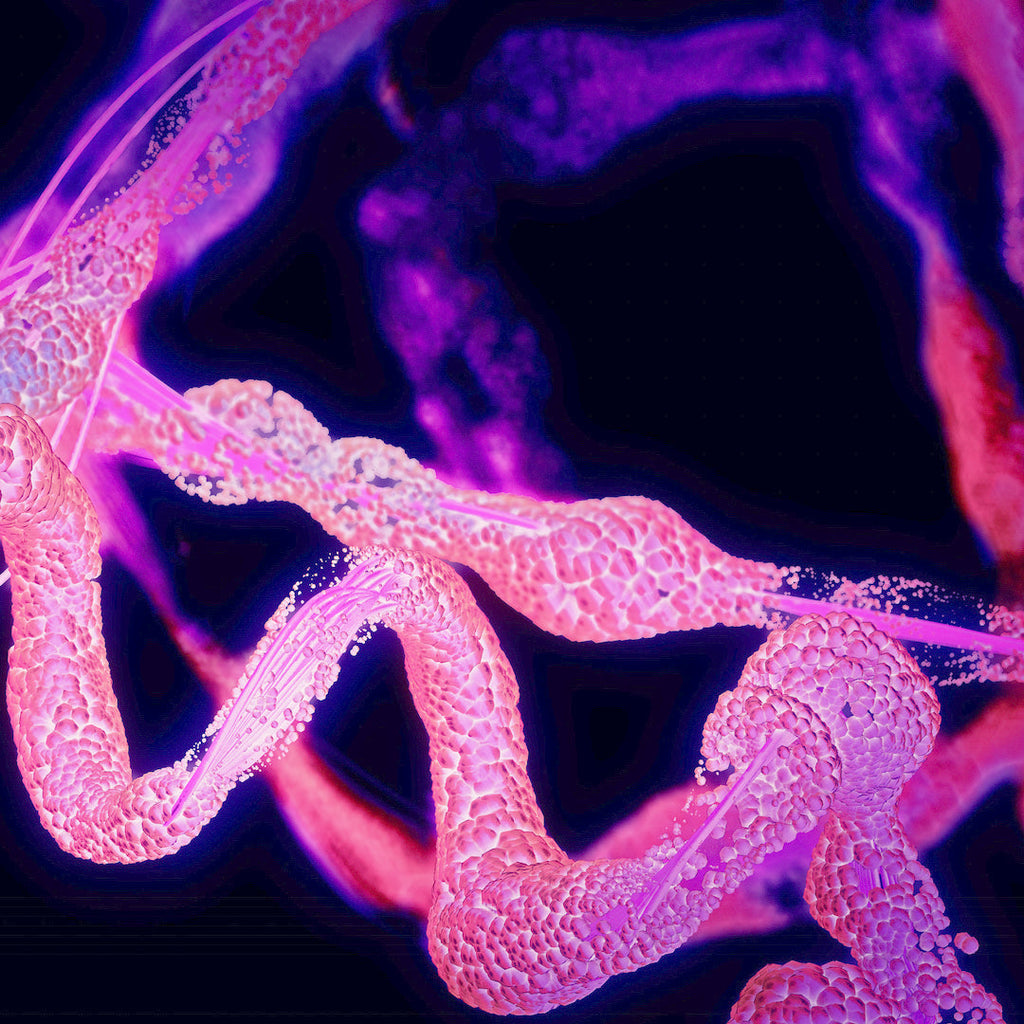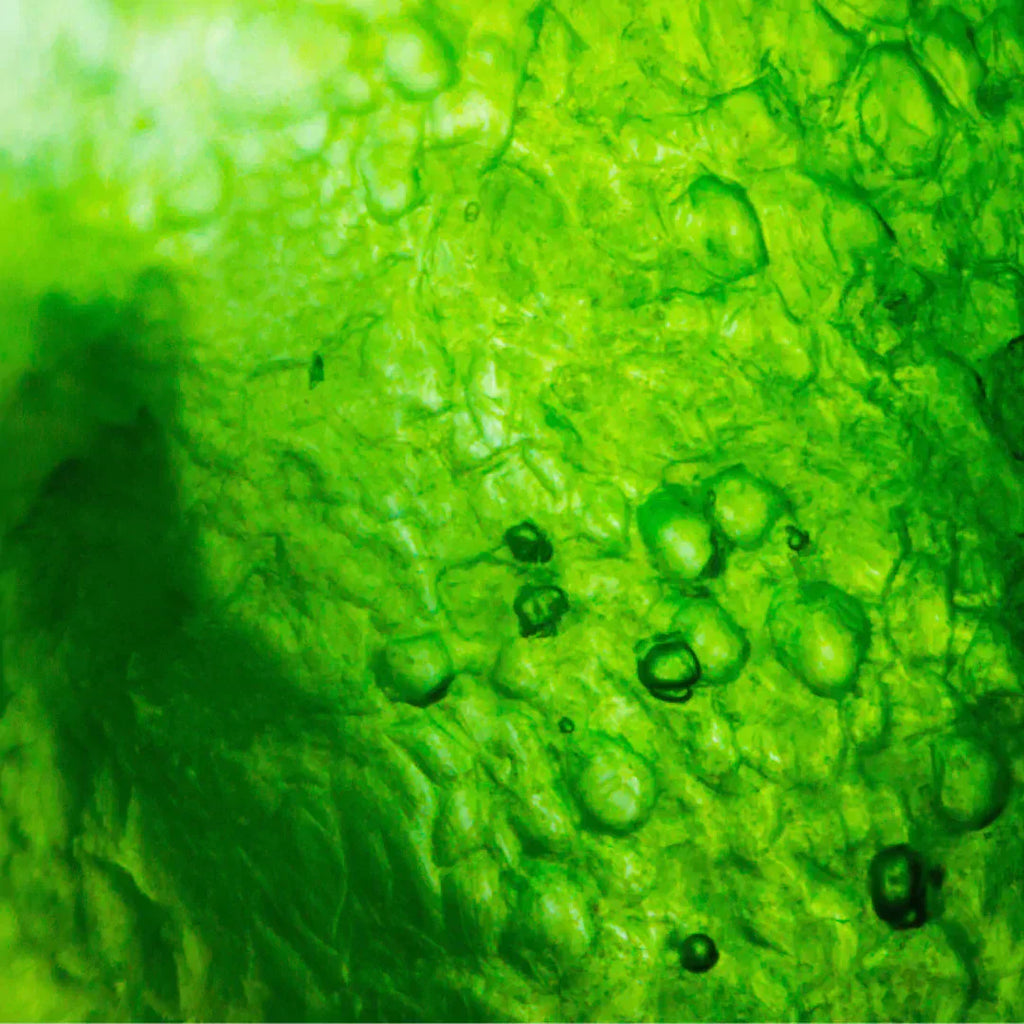Vitamin D
Actually a hormone, the “sunshine vitamin” is best known for its role in calcium regulation and immune health, but performs a multitude of critical biological functions.
Sources of vitamin D
- Vitamin D in food and supplements exists in two forms, cholecalciferol (vitamin D3), and ergocalciferol (vitamin D2)
- While some foods such as oily fish, full-fat dairy, eggs and liver provide vitamin D3, they are generally not consumed in adequate amounts to contribute significantly to the body’s vitamin D stores
- The main source of vitamin D is sun exposure, when ultraviolet-B (UVB light) converts 7-dehydrocholesterol (in the skin) to cholecalciferol (D3). In the UK between October and March we must either rely on optimal stores built up over the summer or consider vitamin D supplements
- Darker-skinned individuals need more sun exposure to produce vitamin D, as melanin (the skin pigment) blocks UVB rays from reaching 7-dehydrocholesterol
- Other ‘barriers’ to vitamin D3 production include clothing and sunscreen designed to protect the skin from damaging UV-rays (1)
- Vitamin D2 is found naturally in sun-exposed mushrooms
Diet and supplements as sources of vitamin D
Vitamin D3 is found predominantly in oily fish such as salmon, sardines and mackerel, with small amounts in liver and egg yolk. Supplementation is particularly prudent for vegetarians and vegans although, given that the major source of supplemental vitamin D3 is obtained from lanolin in sheep’s wool, it’s not suitable for vegans and, until recently, vegans would supplement with vitamin D2 from wild sun-exposed or UVB-irradiated mushrooms; however, it is well recognised that, of the two forms, vitamin D3 is far superior to D2 in terms of both actions and health benefits. (2,3) Fortunately, vitamin D3 can now be obtained from non-mushroom sources including lichen and algae, meaning that vegans, who generally have the lowest levels of vitamin D, (4) can now enjoy the health benefits of this superior nutrient rather than rely on vitamin D2.
Vitamin D2 vs Vitamin D3
Vitamin D, whether produced from sunlight or obtained from food, needs to be ‘chaperoned’ around the body by a specialised protein. Vitamin D2 and D3 differ in shape, with D3 attaching significantly more efficiently than D2 to the vitamin D-binding protein. This means more D3 can be transported than D2, with more potent and longer-lasting effects. (5-7) For example, in subjects taking 4000IU of vitamin D2 or D3 for 14 days, the increase in calcifediol (a vitamin D pro-hormone) was 70% greater with vitamin D3 than D2. (8) A 2010 meta-analysis of vitamin D supplementation studies showed that vitamin D3 supplements were more effective than vitamin D2 supplements for reducing the risk of falls (brought about by postural instability and muscle weakness). (9,10)
Both vitamin D2 and D3 are transported in the bloodstream bound to vitamin D-binding proteins, delivered to the liver and converted into calcifediol (25-hydroxy vitamin D) and then converted by the kidneys into calcitriol (1,25-dihydroxy vitamin D, the biologically active form of vitamin D).
Vitamin D, calcium and bone health
Vitamin D plays a pivotal role in bone health by maintaining normal blood calcium levels and in the normal absorption and utilisation of calcium and phosphorus.
Bones are under a continuous process of remodeling (breakdown and renewal). Cells called osteoblasts build new bone matrix while osteoclasts break it down.
Blood calcium levels may drop as a result of decreased intake, or due to calcium being used elsewhere in the body for cell signalling, blood clotting, muscle contraction and nerve function.
Parathyroid hormone, secreted by the parathyroid glands, acts as a calcium thermostat, sensing when the calcium level in the blood is too high or too low and responding by activating osteoclasts and osteoblasts accordingly.
- When the blood calcium level drops, parathyroid glands secrete parathyroid hormone which draws calcium from the bones into the blood by activating osteoclasts
- In conjunction, a low blood calcium level triggers the kidneys to convert calcifediol to calcitriol (active D3) to increase calcium absorption from the gut
Vitamin D is important for normal growth and development of bones in children
Rickets is a condition affecting children’s bone development where a lack of vitamin D, calcium or phosphate causes bones to become soft and weak, leading to bone deformities such as ‘bow legs’. While rickets was common in Victorian times, it virtually disappeared in the early 20th century due to fortification of foods such as margarine with vitamin D. While rickets’ prevalence is still low, there's been a concerning increase in cases in the UK in the last decade, attributed to low vitamin D status.
Other roles of vitamin D
Together, vitamin D and calcium support muscle function, maintain healthy teeth and cell division. In addition, vitamin D supports normal immune function. As such, a lack of vitamin D and low vitamin D status is now implicated in a wide range of health conditions, especially in the elderly, due to age-related decline in the ability of human skin to synthesise vitamin D. (11)
Immune function
The immune system defends the body from invading organisms and performs numerous functions that ultimately help to keep us healthy. Inflammation, as a normal response to injury or infection, is a beneficial process, but one that must ultimately be resolved – i.e. it must switch on and off appropriately. This process of inflammation resolution helps to maintain a healthy ratio of anti-inflammatory products (such as cytokines and chemokines) to pro-inflammatory products, a process that is disrupted when vitamin D status is low. Numerous immune system cells, including B cells, T cells & macrophages, express vitamin D receptors and/or secrete vitamin D-metabolising enzymes and vitamin D plays an essential role in both innate and adaptive immunity. Impaired or insufficient vitamin D levels lead to dysregulation of essential immune responses, and individuals with suboptimal levels tend to have an increased susceptibility to infection and an increased risk of immune-related health conditions. (12)
Vitamin D deficiency
Low vitamin D status usually results from either inadequate intake of vitamin D or inadequate sun exposure. Vitamin D deficiency is very common in the UK, with around a fifth of adults aged 19 to 64 years and a sixth of children aged 11 to 18 years and adults aged 65 years and over shown to have vitamin D concentration below 25 nmol/L (the equivalent of 10 ng/mL).
Symptoms of vitamin D deficiency
- Recurrent infection or illness
- Difficulty in recovering from infection or illness or impaired wound healing
- Unexplained fatigue
- Joint and/or muscle pain
- Depression/low mood
Factors that influence vitamin D status
- Our genes affect our response to supplements, due to differences in the production of the enzymes, carrier proteins and /or receptors involved in vitamin D’s journey. For example, our genes influence:
- the capacity of the enzymes required to convert vitamin D to calcifediol and/or calcitriol
- the capacity to make the vitamin D-binding protein that is required to carry vitamin D around the body
- the capacity to make adequate vitamin D receptors
- As vitamin D is fat-soluble, much of it is stored in body fat and circulating levels are directly related to fat stores. Therefore, people who are overweight need more vitamin D
- As we age, not only does our skin lose the ability to make vitamin D (due to a decrease in dehydrocholesterol), but we also make less vitamin D-binding protein. Older people, therefore, generally need more vitamin D than younger people
- Oestrogen is known to influence vitamin D status and women taking the oral contraceptive pill tend to have better vitamin D levels than non-users
- The vitamin D content of human breast milk is directly related to the mother's vitamin D status. Breastfeeding mothers are advised to supplement with at least 400IU (10μg) of vitamin D daily, to prevent infant deficiency
- Vitamin D is fat-soluble, requiring some dietary fat in the gut to help with its absorption. Fat malabsorption is associated with a number of conditions including liver disease, cystic fibrosis and Crohn's disease, all of which are associated with lower levels of circulating vitamin D. Taking vitamin D in tablet form (rather than as an oil) significantly increases absorption and is the preferred supplement choice for those with fat malabsorption
- If vitamin D levels are still low after supplementation, low magnesium status may be to blame
- Overweight or obese individuals
- Age >50
- Women who are pregnant, breastfeeding or wishing to conceive
- Dark-skinned individuals
- Vegetarians and vegans
- Those who spend significant periods of time indoors
- Individuals with fat malabsorption
Comparing vitamin D3 supplements
Optimising vitamin D status
How much vitamin D is required to correct deficiency?
Vitamin D level testing
Can we take too much vitamin D3?
References
- Nair R, Maseeh A. Vitamin D: The "sunshine" vitamin. J Pharmacol Pharmacother. 2012 Apr;3(2):118-26.
- Urbain P, Singler F, Ihorst G, Biesalski HK, Bertz H. Bioavailability of vitamin D₂ from UV-B-irradiated button mushrooms in healthy adults deficient in serum 25-hydroxyvitamin D: a randomized controlled trial. Eur J Clin Nutr. 2011 Aug;65(8):965-71.
- Schwarz J, Dschietzig T, Schwarz J, Dura A, Nelle E, Watanabe F, Wintgens KF, Reich M, Armbruster FP. The influence of a whole food vegan diet with Nori algae and wild mushrooms on selected blood parameters. Clin Lab. 2014;60(12):2039-50.
- Crowe FL, Steur M, Allen NE, Appleby PN, Travis RC, Key TJ. Plasma concentrations of 25-hydroxyvitamin D in meat eaters, fish eaters, vegetarians and vegans: results from the EPIC-Oxford study. Public Health Nutr. 2011 Feb;14(2):340-6.
- Armas LA, Hollis BW, Heaney RP. Vitamin D2 is much less effective than vitamin D3 in humans. J Clin Endocrinol Metab. 2004 Nov;89(11):5387-91.
- Heaney RP, Recker RR, Grote J, Horst RL, Armas LA. Vitamin D(3) is more potent than vitamin D(2) in humans. J Clin Endocrinol Metab. 2011 Mar;96(3):E447-52.
- Lehmann U, Hirche F, Stangl GI, Hinz K, Westphal S, Dierkes J. Bioavailability of vitamin D(2) and D(3) in healthy volunteers, a randomized placebo-controlled trial. J Clin Endocrinol Metab. 2013 Nov;98(11):4339-45.
- Trang HM, Cole DE, Rubin LA, Pierratos A, Siu S, Vieth R. Evidence that vitamin D3 increases serum 25-hydroxyvitamin D more efficiently than does vitamin D2. Am J Clin Nutr. 1998 Oct;68(4):854-8.
- Bischoff-Ferrari HA, Dawson-Hughes B, Staehelin HB, Orav JE, Stuck AE, Theiler R, Wong JB, Egli A, Kiel DP, Henschkowski J. Fall prevention with supplemental and active forms of vitamin D: a meta-analysis of randomised controlled trials. BMJ. 2009a Oct 1;339:b3692.
- Bischoff-Ferrari HA, Shao A, Dawson-Hughes B, Hathcock J, Giovannucci E, Willett WC. Benefit-risk assessment of vitamin D supplementation. Osteoporos Int. 2010 Jul;21(7):1121-32. doi: 10.1007/s00198-009-1119-3.
- Berridge MJ. Vitamin D: a custodian of cell signalling stability in health and disease. Biochem Soc Trans. 2015 Jun;43(3):349-58.
- Prietl B, Treiber G, Pieber TR, Amrein K. Vitamin D and immune function. Nutrients. 2013 Jul 5;5(7):2502-21.
- Mazahery H, von Hurst PR. Factors Affecting 25-Hydroxyvitamin D Concentration in Response to Vitamin D Supplementation. Nutrients. 2015 Jun 25;7(7):5111-42. doi: 10.3390/nu7075111. Review.
- Traub ML, Finnell JS, Bhandiwad A, Oberg E, Suhaila L, Bradley R. Impact of vitamin D3 dietary supplement matrix on clinical response. J Clin Endocrinol Metab. 2014 Aug;99(8):2720-8.
- Holvik K, Madar AA, Meyer HE, Lofthus CM, Stene LC. A randomised comparison of increase in serum 25-hydroxyvitamin D concentration after 4 weeks of daily oral intake of 10 microg cholecalciferol from multivitamin tablets or fish oil capsules in healthy young adults. Br J Nutr. 2007 Sep;98(3):620-5. Epub 2007 Apr 24.
- Nelson ML, Blum JM, Hollis BW, Rosen C, Sullivan SS. Supplements of 20 microg/d cholecalciferol optimized serum 25-hydroxyvitamin D concentrations in 80% of premenopausal women in winter. J Nutr. 2009 Mar;139(3):540-6.
- Gallagher JC, Sai A, Templin T 2nd, Smith L. Dose response to vitamin D supplementation in postmenopausal women: a randomized trial. Ann Intern Med. 2012 Mar 20;156(6):425-37.
- Kennel KA, Drake MT, Hurley DL. Vitamin D deficiency in adults: when to test and how to treat. Mayo Clin Proc. 2010 Aug;85(8):752-7; quiz 757-8
- Shab-Bidar S, Bours S, Geusens PP, Kessels AG, van den Bergh JP. Serum 25(OH)D response to vitamin D3 supplementation: a meta-regression analysis. Nutrition. 2014 Sep;30(9):975-85.
- Barry EL, Rees JR, Peacock JL, Mott LA, Amos CI, Bostick RM, Figueiredo JC, Ahnen DJ, Bresalier RS, Burke CA, Baron JA. Genetic variants in CYP2R1, CYP24A1, and VDR modify the efficacy of vitamin D3 supplementation for increasing serum 25-hydroxyvitamin D levels in a randomized controlled trial. J Clin Endocrinol Metab. 2014 Oct;99(10):E2133-7.






